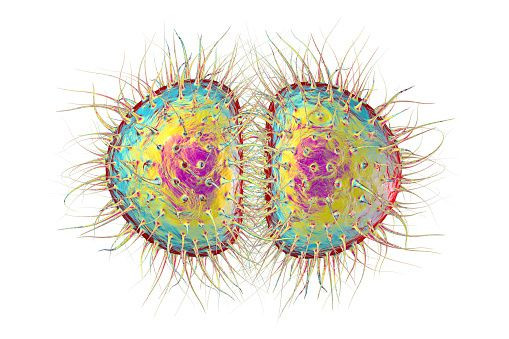Is Gonorrhoea Impossible To Treat? WHO Says STD Is Becoming Antibiotic Resistant

Gonorrhea is becoming harder, and in some cases even impossible to treat, according to a report by the World Health Organization. This is being caused due to the increasing development of antibiotic resistance in the bacteria causing the sexually transmitted disease (STD).
The data was obtained after conducting studies in 77 countries across the world. "The bacteria that cause gonorrhea are particularly smart. Every time we use a new class of antibiotics to treat the infection, the bacteria evolve to resist them," said Dr. Teodora Wi, Medical Officer, Human Reproduction, at WHO. She added: “These cases may just be the tip of the iceberg, since systems to diagnose and report untreatable infections are lacking in lower-income countries where gonorrhea is actually more common.”
The resistance of the bacteria to older and cheaper antibiotics is being reported. In high-income countries, cases have been found where the infection is untreatable by all known antibiotics.
Antibiotic resistance is the ability of bacteria to resist the effects of the drugs used to treat them. This means the germs are not killed and they will continue to reproduce. The bacteria that cause the STD gonorrhea, have reportedly developed resistance to nearly all of the antibiotics used such as sulfonamides, penicillin, tetracycline, and fluoroquinolones, and ciprofloxacin.
The bacteria Neisseria gonorrhoeae not only affects the reproductive tract, but can also affect the mucous membranes of the mouth, throat, eyes, and rectum. The infection is transmitted through sexual contact with an infected person involving the penis, vagina, anus, or mouth. Gonorrhea can also be passed from an infected mother to her baby during delivery.
Those infected with gonorrhea are also at a higher risk of contracting HIV or, if already HIV positive, spreading HIV in addition to gonorrhea, according to Medical News Today. Infected women are at an increased risk for premature labor or stillbirth if left untreated. Other complications include infertility in both men and women, and fever and arthritis if the infection is left untreated.
The Center for Disease Control and Prevention (CDC) have issued warnings against antibiotic resistant gonorrhea. According to the data released by the CDC, about 820,000 new gonorrhea cases occur in the U.S. every year. Less than half of these cases are detected and reported to the CDC. An estimated 246,000 people are resistant to at least one antibiotic that treats the infection.
In 2015, a large number of cases was reported in the age groups of 15-19 and 20-24. In 100,000 people, rates of reported cases in men and women in the 20-24 age group stood at 539.1 and 546.9 respectively.
The CDC lists problems that arise while treating and controlling gonorrhea. A prime setback is that very few U.S. labs can test for resistance. Moreover, few healthcare structures in place have access to these labs. The detection of resistance is also slow which could lead to the treatment failing and a delay in response.
Read: Are Indigestion Pills Harmful? Heartburn Drugs Could Lead To An Early Death, Study Finds
The WHO stated that research and development of drugs for gonorrhea was very limited with only three new candidate drugs in various stages of clinical development. This may be because the development of new antibiotics is not very attractive for commercial pharmaceutical companies.
In its efforts to fight antibiotic resistance in gonorrhea, the CDC is reportedly looking to expand the availability of testing, and reduce time to get results so the patients could be treated as soon as possible. The test results would also help in choosing the correct antibiotics for the patients. Meanwhile, importance is also being given to alert communities about the resistant strains.
© Copyright IBTimes 2025. All rights reserved.





















